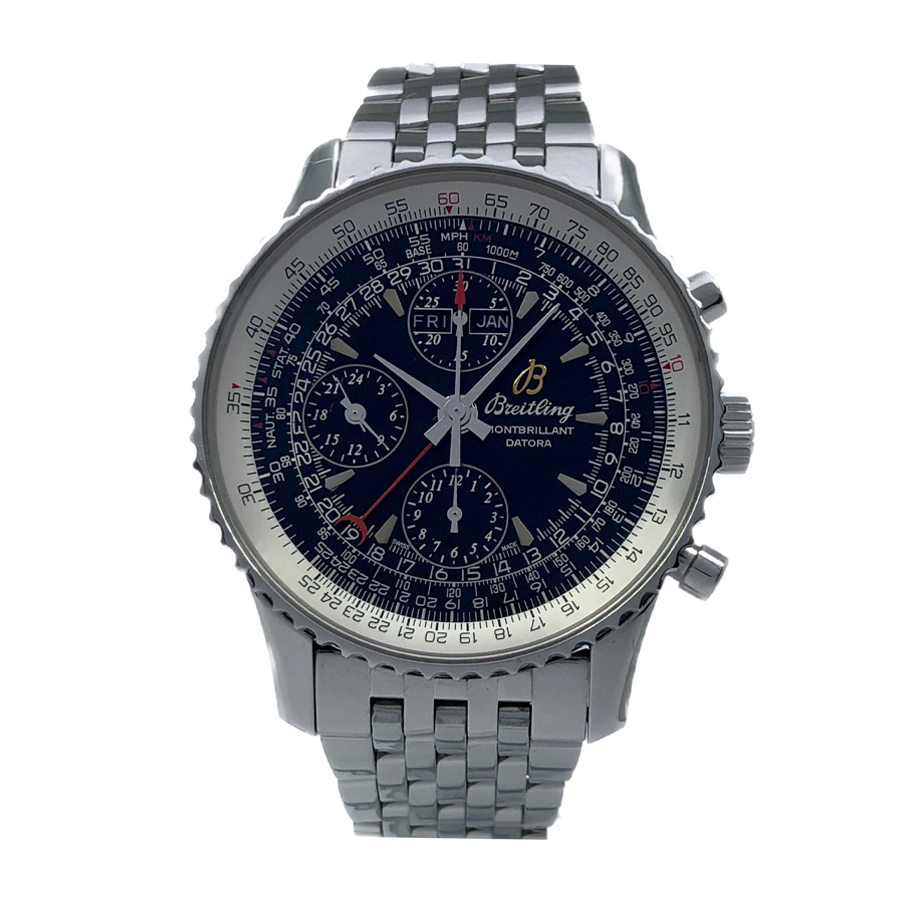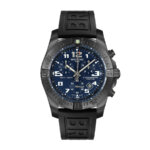What kind of watch does this watch want to be?
I think a lot of people think “Do I like it?” is the most important question you can ask when evaluating a watch. For the potential consumer, it is generally a question. However, for serious watch enthusiasts and watch writers, I think a better question is, “What kind of watch does this watch want to be, and how successful is it at that goal?”
Replica Breitling Super Chronometer, 44mm. 
Failure to consider this question leads to the response, “This 44 mm sports chronograph with 500 meters of water resistance is a disaster, laughs. I’ll stick with my 38mm vintage double dial chronograph, laughs”. If a company is making a 44mm steel sports watch capable of reaching saturation diving depths, then they are clearly not trying to make an elegant Cosmopolitan sports watch.
Vacheron Constantin Chronograph, retailed by Türler, 1942
The problem with this particular one is twofold. The first is the extent to which the watch fulfils its intentions in terms of function. This may or may not play a large part in the final analysis, depending on the extent to which functionality is the main goal of the watch. You could argue (and dear God knows people do) that function and its assistants, accuracy and readability, should be the primary raison d’etre of any watch, but this is not common enough to warrant attention. For a pilot’s watch – and I mean a real pilot’s watch, not one that is basically an illustration of a pilot’s watch – if you can’t read it at a glance, Gryffindor gives you 10 points.
For the MB&F HM3, on the other hand, readability is clearly not a primary consideration. I borrowed one from MB&F one year (red gold) to wear on the SIHH (remember the SIHH?) I wore it on my SIHH (remember the SIHH?), and while deciphering time is never a chore (especially when you drink your first glass of champagne at lunch and then boldly and recklessly continue), it was one of the purest pleasures I’ve ever worn
It was one of the most fun experiences I’ve ever had wearing one.
The second point is the extent to which the watch as a design object fulfils its intent. Sometimes this, rather than function, is a secondary consideration. The IWC Mark XII is one of the most beautiful replica watches ever made (at least I think it is), but it is so not because IWC said to itself, “Hey, let’s make a post-war industrial design classic that will set a new standard in functional elegance and stand the test of time. (I don’t know about …… Maybe they did say that at the beginning of the design process, but that’s probably not the way to bet. (Although Walter Olds did say that the Mark XII was “every non-pilot’s favourite pilot’s copy watch.”)
Instead, the Mark XII is almost as beautiful by accident as a Samurai sword or an SR-71. Aquinas (who is read less often these days than he should be) said that beauty requires three things. Wholeness, harmony, and clarity. Mark XII has these things, but they are the result of its single purpose and deal with everything unrelated to that purpose.
On the other hand, the Cartier Crash is clearly not intended to be an ode to function. Rather, it is something that might be evaluated a little more like a work of art. In fact, it is a deliberate subversion of function, and that is what makes it so appealing. My other favourite, the Tank à Guichets, is clearly focused neither on precision nor on readability – yet it is one of the best exercises in the art of horological composition ever made.

